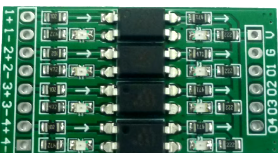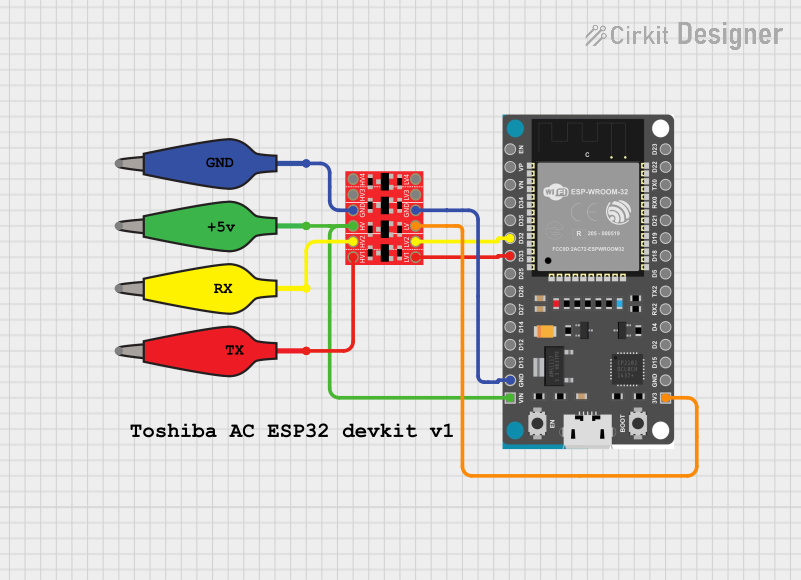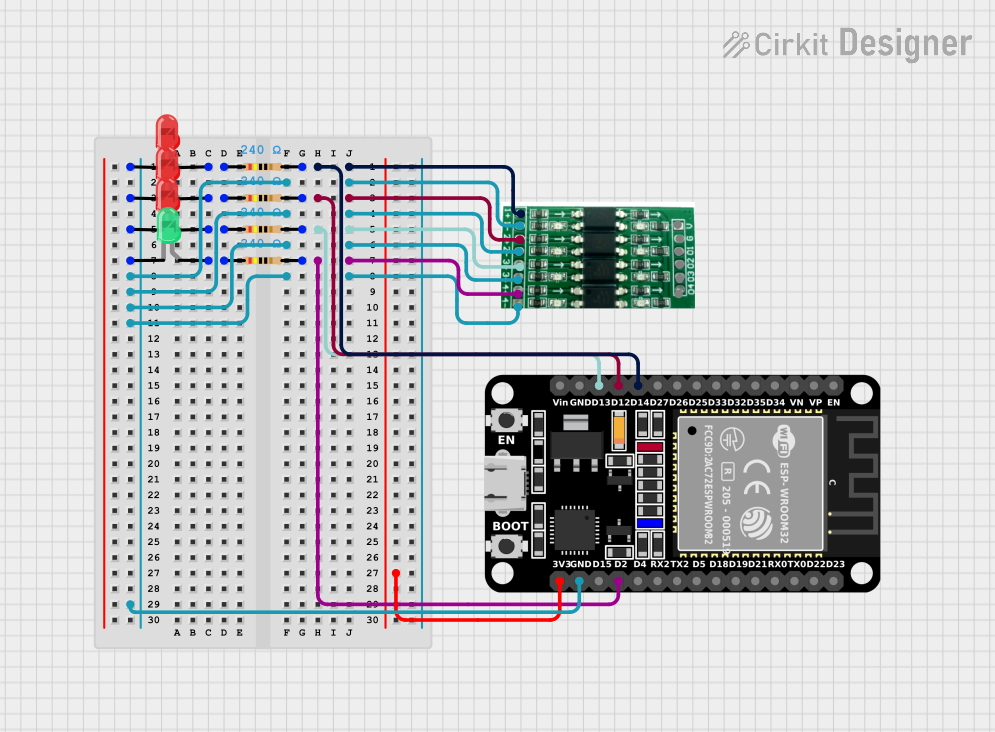
How to Use logic_level_converter: Examples, Pinouts, and Specs

 Design with logic_level_converter in Cirkit Designer
Design with logic_level_converter in Cirkit DesignerIntroduction
A Logic Level Converter is an essential device used to safely step down or step up voltage levels between different parts of a circuit. This allows components with different voltage requirements to communicate effectively. For instance, it enables a 3.3V microcontroller to interface with a 5V sensor or vice versa. This component is crucial in mixed-voltage systems, ensuring compatibility and protecting sensitive components from damage due to incorrect voltage levels.
Explore Projects Built with logic_level_converter

 Open Project in Cirkit Designer
Open Project in Cirkit Designer
 Open Project in Cirkit Designer
Open Project in Cirkit Designer
 Open Project in Cirkit Designer
Open Project in Cirkit Designer
 Open Project in Cirkit Designer
Open Project in Cirkit DesignerExplore Projects Built with logic_level_converter

 Open Project in Cirkit Designer
Open Project in Cirkit Designer
 Open Project in Cirkit Designer
Open Project in Cirkit Designer
 Open Project in Cirkit Designer
Open Project in Cirkit Designer
 Open Project in Cirkit Designer
Open Project in Cirkit DesignerCommon Applications and Use Cases
- Microcontroller Interfacing: Connecting 3.3V microcontrollers (e.g., ESP8266, ESP32) with 5V peripherals (e.g., sensors, modules).
- Communication Protocols: Ensuring proper voltage levels for I2C, SPI, UART communication between devices with different voltage requirements.
- Mixed-Voltage Systems: Integrating components with varying voltage levels in a single circuit without risking damage.
Technical Specifications
Key Technical Details
| Parameter | Value |
|---|---|
| Operating Voltage | 1.8V to 5V |
| Maximum Current | 150mA per channel |
| Channels | 4 bi-directional channels |
| Communication | I2C, SPI, UART, GPIO |
| Dimensions | 15mm x 15mm x 3mm |
Pin Configuration and Descriptions
| Pin | Name | Description |
|---|---|---|
| 1 | HV | High Voltage (1.8V to 5V) |
| 2 | LV | Low Voltage (1.8V to 5V) |
| 3 | GND | Ground |
| 4 | TXI | High Voltage Input (TX) |
| 5 | TXO | Low Voltage Output (TX) |
| 6 | RXI | Low Voltage Input (RX) |
| 7 | RXO | High Voltage Output (RX) |
| 8 | CH1 | Channel 1 (Bi-directional) |
| 9 | CH2 | Channel 2 (Bi-directional) |
| 10 | CH3 | Channel 3 (Bi-directional) |
| 11 | CH4 | Channel 4 (Bi-directional) |
Usage Instructions
How to Use the Component in a Circuit
Power Connections:
- Connect the HV pin to the high voltage source (e.g., 5V).
- Connect the LV pin to the low voltage source (e.g., 3.3V).
- Connect the GND pin to the ground of both voltage sources.
Signal Connections:
- For unidirectional communication (e.g., UART):
- Connect the TXI pin to the high voltage signal source.
- Connect the TXO pin to the low voltage signal destination.
- Connect the RXI pin to the low voltage signal source.
- Connect the RXO pin to the high voltage signal destination.
- For bi-directional communication (e.g., I2C):
- Use the CH1 to CH4 pins for the respective channels.
- For unidirectional communication (e.g., UART):
Important Considerations and Best Practices
- Voltage Levels: Ensure that the HV and LV pins are connected to the correct voltage levels to avoid damaging the converter or connected components.
- Current Limitations: Do not exceed the maximum current rating of 150mA per channel.
- Noise Reduction: Use decoupling capacitors close to the power pins to reduce noise and ensure stable operation.
- Proper Grounding: Ensure a common ground between all connected devices to avoid communication issues.
Example: Connecting to an Arduino UNO
To connect a 3.3V sensor to a 5V Arduino UNO using a logic level converter, follow these steps:
Power Connections:
- Connect the HV pin to the 5V pin on the Arduino.
- Connect the LV pin to the 3.3V pin on the Arduino.
- Connect the GND pin to the GND pin on the Arduino.
Signal Connections:
- Connect the sensor's data pin to CH1 on the low voltage side.
- Connect CH1 on the high voltage side to the corresponding Arduino pin (e.g., A0).
Sample Code for Arduino UNO
// Sample code to read data from a 3.3V sensor connected via a logic level converter
const int sensorPin = A0; // Pin connected to CH1 on the high voltage side
void setup() {
Serial.begin(9600); // Initialize serial communication at 9600 baud
pinMode(sensorPin, INPUT); // Set the sensor pin as an input
}
void loop() {
int sensorValue = analogRead(sensorPin); // Read the sensor value
Serial.println(sensorValue); // Print the sensor value to the serial monitor
delay(1000); // Wait for 1 second before the next reading
}
Troubleshooting and FAQs
Common Issues Users Might Face
No Communication Between Devices:
- Solution: Check the voltage levels on HV and LV pins. Ensure proper connections and common ground.
Intermittent Data Loss:
- Solution: Use decoupling capacitors close to the power pins. Ensure stable power supply and proper grounding.
Overheating:
- Solution: Ensure the current does not exceed 150mA per channel. Check for short circuits or incorrect connections.
FAQs
Q1: Can I use the logic level converter for both I2C and SPI communication?
- A1: Yes, the logic level converter supports both I2C and SPI communication protocols.
Q2: What happens if I connect the HV and LV pins incorrectly?
- A2: Incorrect connections can damage the logic level converter and connected components. Always double-check the voltage levels before powering the circuit.
Q3: Can I use the logic level converter with a 1.8V device?
- A3: Yes, the logic level converter supports voltage levels as low as 1.8V.
Q4: How many channels can I use simultaneously?
- A4: The logic level converter provides 4 bi-directional channels that can be used simultaneously.
By following this documentation, users can effectively integrate a logic level converter into their circuits, ensuring safe and reliable communication between components with different voltage requirements.